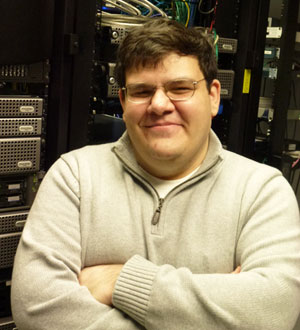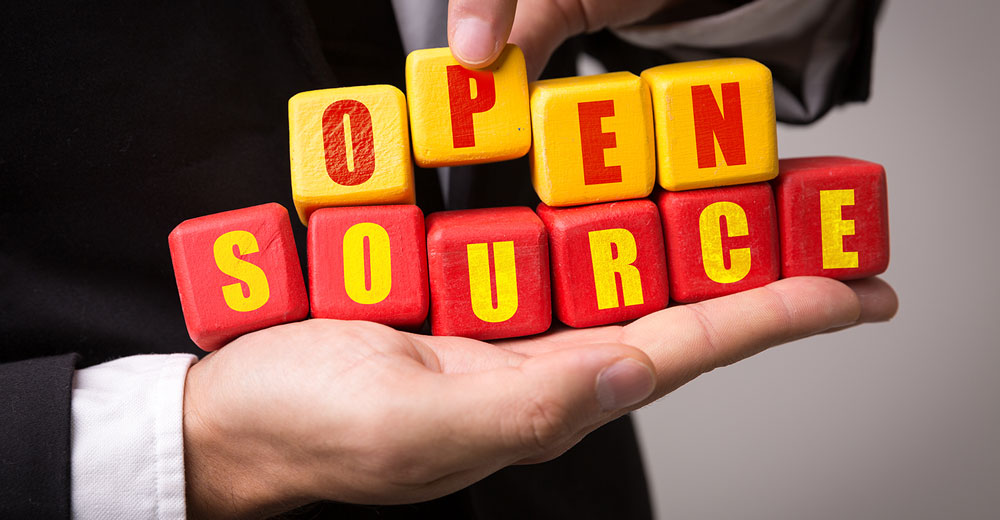eScholar’s only business is helping state and local education agencies get the best bang for their buck from collecting and using educational data to drive better school performance results.

That sometimes involves helping its customers work with data gleaned from a variety of commercial and open-source enterprise databases. Other times, it becomes a task performed by eScholar’s own in-house software solutions built around open-source code.
Open source products are not always a successful sell to the educational market, but open source is becoming a more prevalent force in eScholar’s off-site and on-site product offerings.
The company hopes to expand the usefulness of aggregated education data. It is doing this by putting performance results and their impact on career options into the hands of parents and students, as well as education professionals.
In this exclusive interview, LinuxInsider asks Michael Gargano, software architect for eScholar, about the challenges and issues his company faces in bringing open-source data management solutions to the educational market.
LinuxInsider: What got you involved with open-source software?
Michael Gargano: I’ve been with eScholar for five years. I was originally working as a systems administrator in the IT operations at an auto industry firm. Back then, we were already using open source. I moved to another job that also used open-source technology before coming to eScholar. I found open source being used here, and its use has expanded even more. Open source is something you can not really get away from these days.
What are the benefits you have found that open source brings to companies that adopt it?
Gargano: It has a lot of benefits. You can really cut costs with it. Open-source software is very robust nowadays. A lot of people are looking at it now. It is really something that you can not avoid.
How difficult is it for you to convert customer data to eScholar’s requirements?
Gargano: We are an educational data company. Our main product is an educational data warehouse. We house educational data from both state and local educational agencies and school districts. We handle almost everything they would want to store — from class numbers, students, grades, [to] course numbers.
We work with whatever system the customer has to record the accumulated data. It might be an Oracle shop, or [an] SQLServer shop, or [a] DBT Shop. We use whatever the customer’s infrastructure is. Often, the customer does not want to change what they have, so we adapt to whatever is in use.
How has eScholar adapted open source to create the company’s own specialized offerings?
Gargano: The product I am working on now is called “myTrack.” This is really the first product we are developing on our own. It is allowing us to leverage the data we are putting in our warehouse. We take all the information — like staff performance, student grades, and career goals — and put it together to help them with goals, better grades, and career training.
How does this new product compare to established solutions customers might already have, such as commercial software?
Gargano: Because we are offering this product as a Software as a Service (SaaS), we have a little bit more control over our technology’s backend. That’s because we are servicing our website and are not pulling from the customer’s application.
PostgreSQL has much of the same functionality. So, do other open-source database products compare to products such as Oracle? Consider EnterpriseDB. What they actually do is have access to the free open-source versions of Oracle — and then they make it even more Oracle-like.
How do your products help leverage database results for eScholar’s clients?
Gargano: One of our original products, CBW or Complete Data Warehouse, actually has become one of our flagship products. This works with whatever system our customers currently use, such as if they are an SQL Server shop. It works at the client’s site and is usually managed by the client’s IT department.
The myTrack product is separate. It allows a customer to move the existing database into myTrack. We are doing this product differently in that we offer it as SaaS so we can control the entire data stack.
The choice for the client of a database product is transparent. With myTrack, they really don’t have to worry about that. Customers don’t have to change what they are doing today. It is all transparent from their perspective.
Looking at the last five years, have you seen any hurdles in getting customers to move into an open-source database product?
Gargano: Oftentimes, the decision is made based on what the customers already have. Sometimes, school districts are bound to a state service with a vendor contract with Microsoft, for instance. So, getting them to select something different would require them to retrain or get new staff to do something different from what they are doing.
Plus, the fact that it is open source probably adds some apprehension on their part. Bringing in open source might raise questions about where they will get continued support when they no longer use Microsoft or Oracle. So, in that sense, it has been a little bit of an uphill battle.
With our addition of a software-as-a-service product, we can be a lot more flexible in determining our own software stack.
What about reactions to the misguided concept of open-source products being free and thus lacking value?
Gargano: There does seem to be a holdover from enterprise in general that if something is free, it must not be as good as something that is paid for. That view is starting to shift a little bit.
It is a little bit harder in the education market if you are getting a good relationship with Oracle or SQL Server. They are great products. There are a lot of reasons why you wouldn’t want to switch and do something different.
What do you see as the biggest challenge in marketing your new product, myTrack?
Gargano: One of the biggest challenges we have is the introduction of new users. Most of our existing database products are used only by administrators or officials on the state level. MyTrack will be available to parents and students. So, we have to worry about being able to marry very large amounts of data. We also have the challenge of managing access to so many people.
Where do you see the potential for open source to grow more in the educational field?
Gargano: I don’t really see open source going anywhere. It is not going to become a widespread reality right away. There still is too much high-quality software out there. Still, it has lots of strong support and good communities around it. There is still an attitude of why reinvent the wheel when somebody else has already done it.
Even though the educational market is slow to adopt new things, I think it is inevitable that open source is going to work its way into education. There is no reason for the education field to stop it. There is really nothing wrong with it. People no longer see open source as a problem. I think as more people continue to use open source, it will work its way into the education field.
What about fears of security concerns some people attach to open source? Do school admins see that as a threat?
Gargano: I personally have never had that argument proposed. The reactions to open source are more along the lines of why change the software if it isn’t broken rather than viewing it as a security issue.
























































Even though this article didn’t touch on using open source software on the desktop as much, that is also a very important part of the educational equation. I’ve seen open source software, most notably GNU/Linux greatly succeed for educational purposes. Not only for younger children with high quality games like GCompris, TuxMath, TuxType, etc. But it increases (in my opinion) with older students as well because the source code is always available. this is in addition to providing top quality software like the GNU/Linux operating system, LibreOffice, Stellarium, and thousands of other science/math applications. And best of all, it costs nothing. To me, it wins hands down every time. I’m surprised more schools don’t adopt it. Microsoft has bought its way in to schools in the past with its cash pile, but I think that is getting harder for them to do.